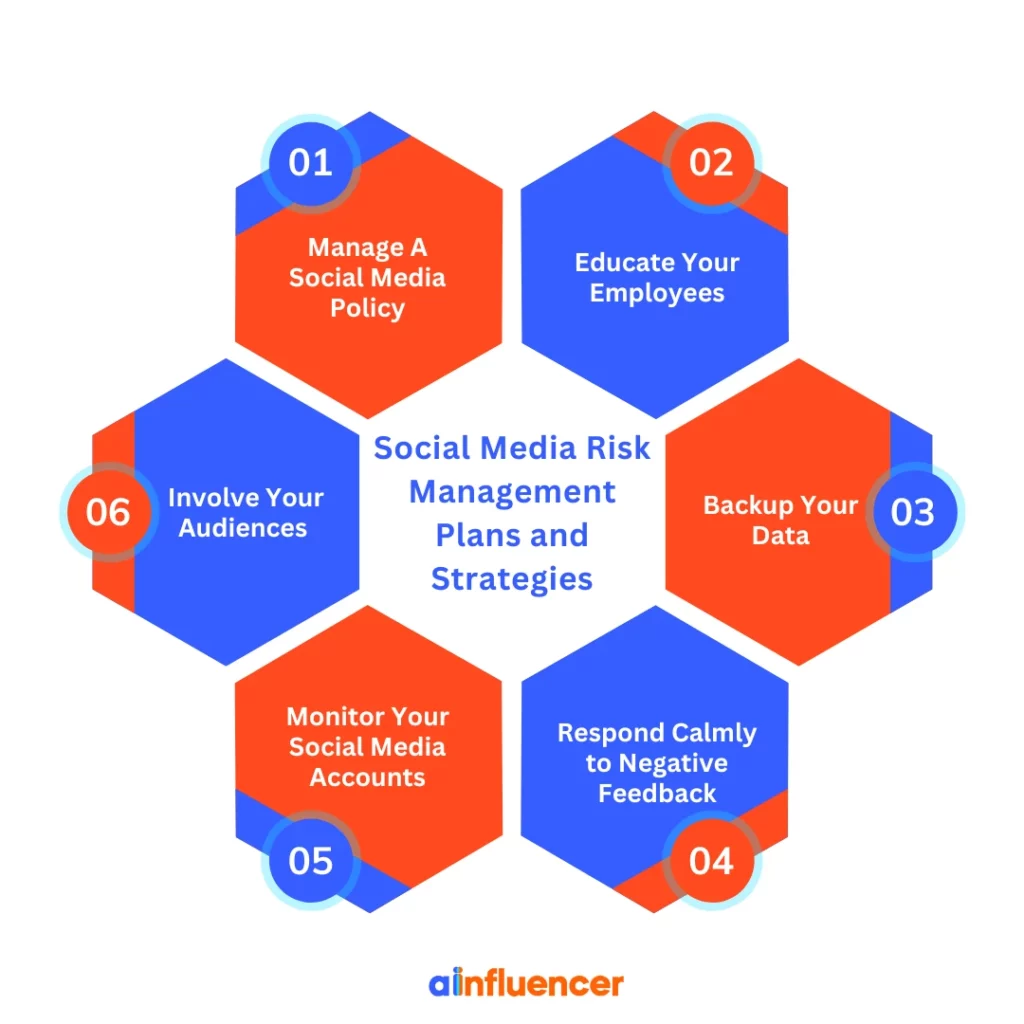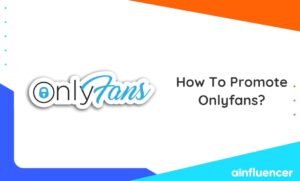For anyone entering the business world, understanding social media is crucial. It’s a powerful tool for connecting with customers, boosting brand awareness, and driving sales. However, it also comes with numerous risks. Social media risk management involves identifying and addressing these risks to safeguard a company’s most valuable asset, its reputation.
By having a comprehensive social media risk management strategy, businesses can manage the challenges of social media, turning potential threats into opportunities to increase brand awareness and success.
What Is Social Media Risk Management?
Suppose you’re unfamiliar with social media risk management. In that case, It’s important to understand that social media risk management involves a systematic approach to identifying, assessing, and addressing risks and threats associated with a company’s use of social media platforms.
In other words, social media risk management closely relates to brand management. This process involves two main types of actions:
1. Preventive Measure
Preventive measures are actions taken beforehand to decrease the likelihood of risks. This includes implementing social media policies, educating staff on proper procedures, monitoring social media activity for potential issues, and securing accounts to prevent unauthorized access. These steps help weaken risks before they happen.
2. Response Measures
Responsive measures in social media risk management can positively impact your business. Reactive steps, or reactionary measures, refer to actions taken after a risk has been identified to manage and minimize its impact. These measures involve responding to negative comments or crises, addressing security breaches, and correcting misinformation that has already occurred.
What Is the Importance of Social Media Risk Management?
Social media risk management is essential for several reasons. It helps protect your online brand reputation, secure your accounts and data from cyber threats, and ensure compliance with legal obligations. Additionally, it supports operational resilience by preparing for unforeseen issues like platform outages or cyber-attacks. Finally, it ensures crisis preparedness, enabling you to handle emergencies and maintain open communication effectively.
Social Media Risk Examples
To prevent risks on your social media and identify threats, first, you need to understand them, so you can stay alert, and then you might be able to prevent the threat, or even reverse its impact. Here are the main social media risk examples.
- Risk Related to Security: Security risk refers to the potential threats and breaches that may compromise the secrecy, accuracy, and accessibility of data shared on social media platforms. This involves safeguarding sensitive information from cyber-attacks and data breaches. This usually happens when your social media gets hacked, granting access to confidential data.
- Risk Related to Reputation: Reputational risk refers to the possibility of harm to the reputation of a business due to its activities on social media platforms. This means you need to make sure people see you in a good light and quickly deal with any bad comments, scandals, or rumors.
- Risks to Social Media Strategies: Threats and risks in social media involve problems that can occur in managing and executing influencer marketing strategies and social media strategies, leading to disruptions. Issues like inadequate training or technical glitches can affect every one of your brand’s social media efforts.
- Communication During a Crisis: Crisis communication is about handling challenges during social media crises. It means having a clear plan for emergencies. No matter what the crises are, responding promptly to negative feedback, addressing rumors, and managing public perception during a crisis is crucial.
- Risk to Violate Legal Guidelines: This risk involves breaking laws or moral standards on social media. It means ensuring your actions meet legal requirements and industry rules. This can happen when your brand mishandles user data, violates privacy laws, or uses copyrighted material without permission.
- Financial Outcomes: Negative situations such as PR crises, compliance violations, or security breaches can escalate into larger problems, potentially impacting a company’s financial performance. This highlights the importance of having a strong social media risk management plan to weaken financial risks when engaging on social platforms.
Social Media Risk Management Plans and Strategies
To prevent crises and enhance social media risk management, you’ll need effective social media marketing strategies and plans. Here are some key points to consider in your campaign management so you can avoid social media risks.

1. Manage A Social Media Policy
For every business, the first step is to be aware of the policies of each social media platform. A clear social media policy is essential for effective risk management. Roles during crises should be clearly defined and also cover the process of managing social media accounts when staff members leave, ensuring continuity and security.
A social media policy outlines rules for using social media within a company, helping employees understand boundaries and best practices for representing the brand online. Important components include:
- Distinguish the Use of Social Media: What’s your purpose for using social media platforms? Is it personal or business? When using any social media platform for your brand, make sure to remind your staff to act professionally. This is a great example of social media risk management strategies.
- State Consequences for Violations: It is important to clearly outline the consequences of violating the company’s social media policy, as it can directly impact your business. By clearly stating the consequences of breaking the rules and acting hastily, employees are more likely to think twice before making sudden decisions on social media.
Require Employees to Openly Acknowledge Their Connection: Sometimes, an employee can become a spokesperson for your business and act as your brand ambassador. Therefore, it’s important to remind them to disclose their connection to the company when discussing your brand on their social media accounts. They should openly acknowledge their affiliation with the company to build trust with their audience.
- Safeguard Privacy: Confidentiality and privacy are paramount for effective social media risk management. It’s essential to emphasize the importance of protecting the brand’s privacy policy. Make it clear that sharing customer data or any information is not permitted under any circumstance.
2. Educate Your Employees
This method is one of the best social media risk plans. Employees can be effective promoters for your brand, yet without clear guidelines and education, they might unintentionally jeopardize your business with non-appreciative or reputation-damaging posts. Applying social media guidelines and providing training courses is crucial to minimize these risks.
Make sure all employees are educated on the social media risk management policy. This ensures the prevention of shortcuts and breaches in password creation or access sharing.
Everyone in the organization should understand their responsibility to keep the brand safe on social media. Although the social media risk management framework should already be in place, it requires regular maintenance to remain effective.
3. Backup Your Data
Keeping your data safe is a great social media risk management plan but it isn’t always guaranteed, so it’s essential to have a backup. Losing data can have disastrous effects, impacting not just your social media activities but your entire company. Regularly backing up your social media data is essential to avoid any problems.
Here are some ways to backup your data:
- Schedule Backups: When you schedule regular backups of your social media content on a daily, weekly, or monthly basis, depending on your posting frequency, you’re essentially safeguarding your data.
- Store Your Backups: When backing up your regular data, it’s important to store them in multiple locations. This ensures that if one location is compromised due to security breaches or technical issues, you’ll have backups stored elsewhere.
4. Respond Calmly to Negative Feedback
When you enter the marketing world, you need to stay calm and expect some negative feedback, even if you use the best marketing strategies. Sometimes, people might say awful things about your business that aren’t true.
Given the rapid spread of negative feedback on social media, it’s important to address the issue calmly by:
- Establish a Response Plan: The volume of negative comments can be overwhelming for a CEO to handle alone. To manage this effectively, appoint someone to oversee the situation and establish a plan to address such crises.
- Acknowledge the Problem Publicly: When facing a crisis due to feedback on social media, stay calm and explain everything to the public with complete honesty.
5. Monitor Your Social Media Accounts
Set up separate teams for each social media account, with experts managing different tasks like helping customers, designing the website, and handling public relations. Using these systems ensures that important problems go to the right teams, so they can fix them well and improve their own areas of work, which is crucial for helpful social media marketing risk management.
6. Involve Your Audiences
Engage actively with your audience to manage social media marketing risks effectively.. Engaging with your audience helps build trust and prevent reputation risks. By interacting with your followers and encouraging customer engagement, you show your commitment to being open and responsive. Here are some tips to get your audience involved with your brand:
- Share Content Created by Users: When you highlight or share content created by your followers, it shows gratitude and appreciation, increasing their engagement, commitment, and loyalty.
- Show Gratitude: Showing your gratitude involves showcasing posts, photos, or videos created by your followers or customers. This shows appreciation for their support and involvement with your brand, increasing their attention and loyalty.
- Ask for Feedback: Encourage your followers and customers to share their opinions and suggestions randomly to make them feel heard and important.
Conclusion
Managing social media risks is essential for any business wanting to use social media effectively while protecting its reputation. By spotting and handling potential problems, companies can keep their brand safe and maintain a positive online presence. Dealing with risks promptly can prevent crises and protect your business.
FAQs
While social media allows connection and communication, adults must use it carefully. By being aware of dangers like privacy invasion, cyberbullying, mental health issues, and addiction, adults can make smart choices to protect themselves.
This risk comes from negative public perceptions and activities in society. Our beliefs, emotions, mental health, fears, and anxieties influence social risk.
Potential consequences include unauthorized access to personal information, cyberbullying, reputation damage, and negative impacts on mental health. For organizations, social media risks present significant challenges as well.
Log out of your social networks and search for yourself to see how your profile looks to the public. Regularly update your passwords and avoid using the same one for all accounts to prevent hacking and inappropriate posts.









